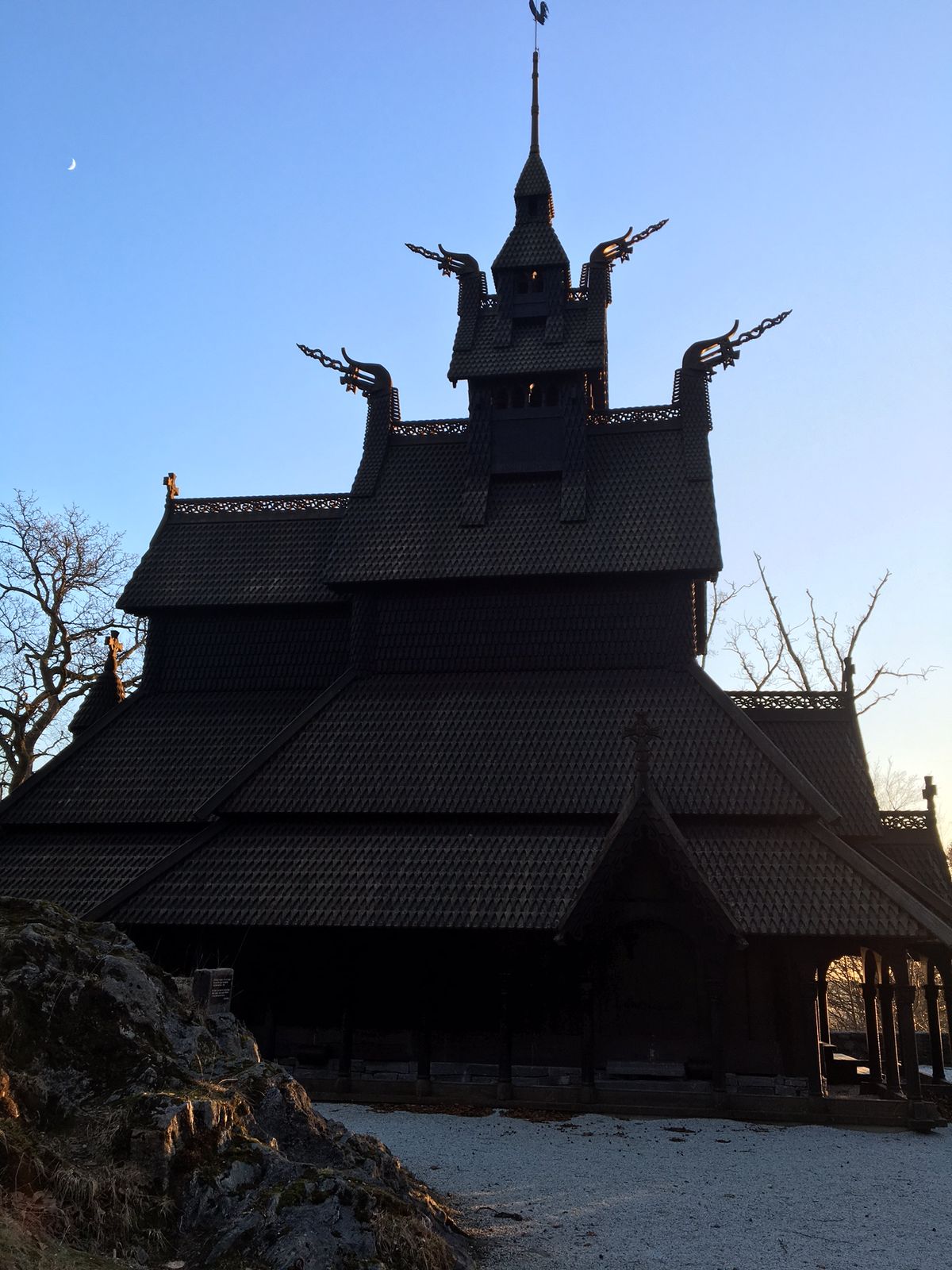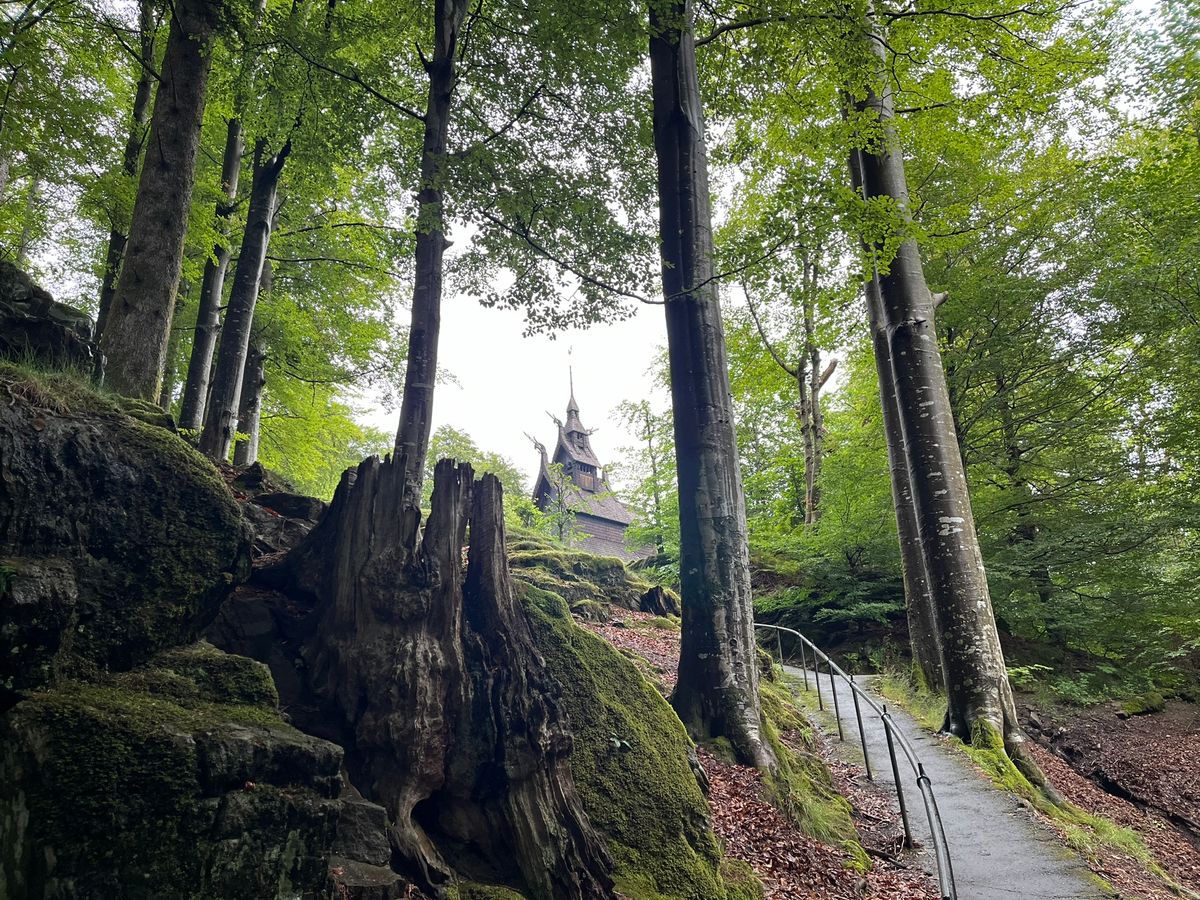About
Located in the Fana borough in Bergen, Norway, is a blackened stave church that is nearly a millennium old. Or it would be nearly that age today if it hadn't been destroyed (most likely) by Black Metal musician and arsonist, Varg Vikernes, in 1992.
The original Fantoft Stave Church was built around 1150 in Fortun, a small village about 183 miles northeast of Bergen. Like other stave churches with their characteristic soaring vertical design, its fully wooden construction was supported only by a foundation made of stones. The structure's planks, columns, and supports were dovetailed or pegged together—no glue or nails necessary.
Hundreds of these peculiarly Norwegian stave churches were built in the 12th and 13th centuries, but by the 19th century there were only a few dozen left. Though Fantoft Stave Church was one of the lucky few left standing, the hard economic conditions in Norway had left the church in disrepair. Local villagers began to remove salvageable pieces for their farms — including the baptismal font, which was repurposed as a trough for livestock. The structure was slated for demolition until a Bergen businessman, Fredrik Georg Gade, bought it and had it moved piece by piece to Fantoft, where it was reconstructed.
Eventually, the church was listed as a historic site. That is, of course, until it was burned to the ground in 1992, the first in a spate of church fires set by Norway's emerging Black Metal scene that ultimately consumed 22 stave churches. Vikernes, AKA Count Grishnackh, was later convicted of burning four churches, but was found not guilty in the case of the Fantoft Stave Church. Suspicion continued to swirl around Vikernes, however, as he had bragged to a journalist in 1993 that the Fantoft fire was the work of the Black Metal community, rather than lightning or electrical failure (as had initially been believed), and had used a photograph of the burnt church on his 1993 EP release, Aske (Norwegian for ashes), for his one-man band, Burzum. Vikernes stated that the church-burning campaign was part of a war Black Metal was waging on Christianity and Norwegian society.
The reconstruction that stands in its place today was completed in 1997 and includes the original crucifix, which survived the fire. While it is no longer a designated historical building, it is a faithful representation of this unique, centuries-old church style built during the overlap of traditional Norse mythology and new-fangled Christianity in Norway.
Update as of July 2021: The church is closed for the 2021 summer season.
Related Tags
Community Contributors
Added By
Published
March 25, 2016
















































